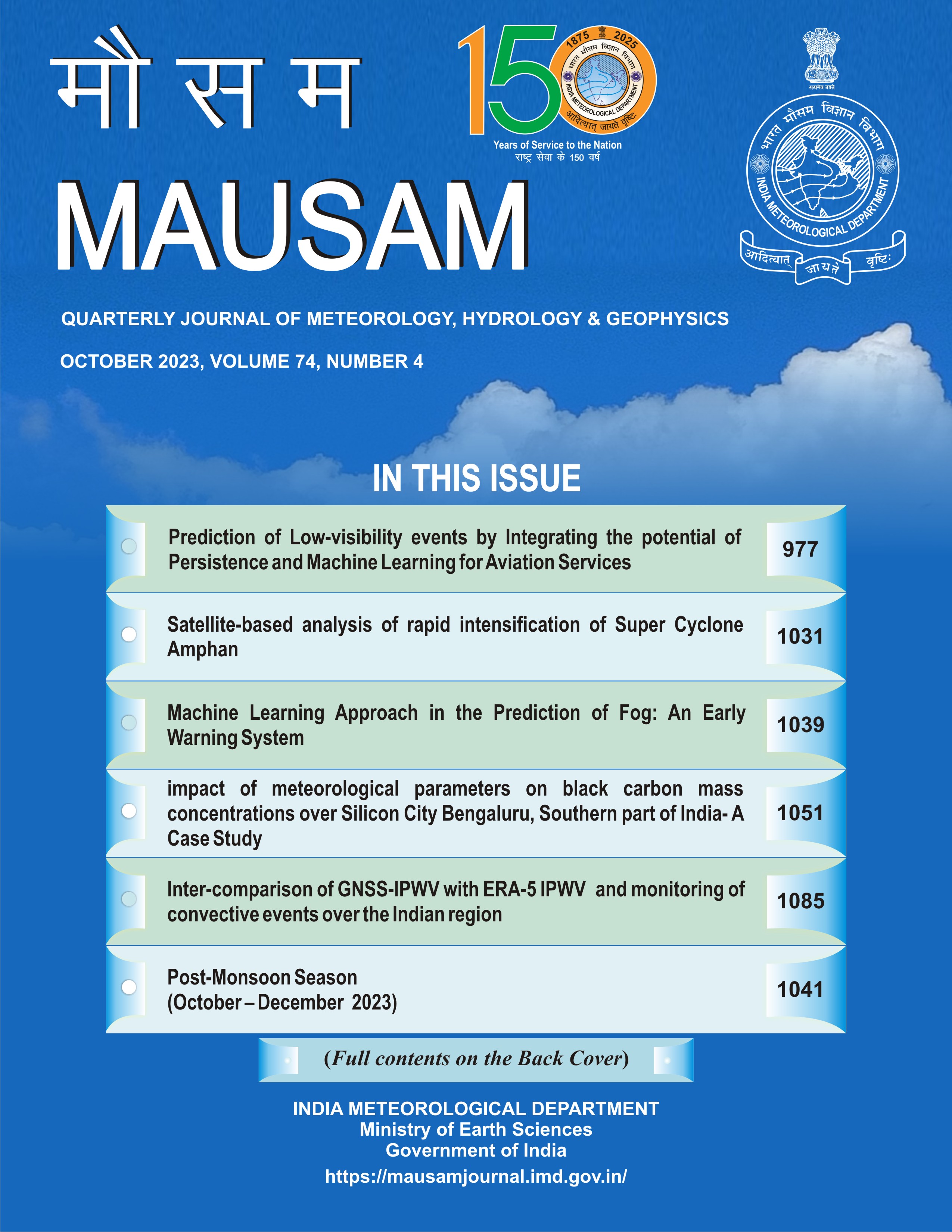Assessment of Spatiotemporal Variations in Actual Evapotranspiration using the pySEBAL Model and Remote Sensing Data in Navsari, Gujarat, India
DOI:
https://doi.org/10.54302/mausam.v75i4.6348Keywords:
SEBAL, Actual evapotranspiration, Spatiotemporal dynamics, Energy balance, Remote sensing and GRASSGISAbstract
Evapotranspiration (ET), encompassing both transpiration from plants and evaporation from the Earth's surface, is a vital component of the hydrological cycle and influences water and energy exchanges between the surface and the atmosphere. This study investigates the application of the Surface Energy Balance Algorithm for Land (SEBAL) to estimate actual evapotranspiration (AET) over a selected region. The study area, located in Navsari district of Gujarat, India, was characterized by varying climates and land cover conditions. Cloud-free LANDSAT 8 satellite images were utilized at a spatial resolution of 30 x 30 meters to execute the SEBAL model within the Python-built GRASSGIS software. The SEBAL algorithm, based on the principles of energy balance, calculates AET by considering net radiation, sensible heat flux, and ground heat flux. The results showed that AET correlated with factors such as vegetation cover, land surface temperature, and net radiation. The AET rates exhibited significant spatial and temporal variations, with the highest rates observed in May and the lowest in months with reduced net radiation. Across the study area, the dominant AET rate ranges from 3 to 6 mm/day during the summer months and from 2 to 3 mm/day during the winter months. This pattern encompasses more than 65% of the total study area. Moreover, the highest AET values derived from the SEBAL model are contrasted with potential ET (PET) estimates obtained through diverse empirical techniques. This analysis demonstrates a robust alignment between SEBAL-based AET and PET calculations. Notably, in the months of April and May, when the peak AET closely corresponds to PET, there is a potential indication of impending water scarcity concerns.
Downloads
Published
How to Cite
Issue
Section
License
Copyright (c) 2024 MAUSAM

This work is licensed under a Creative Commons Attribution-NonCommercial 4.0 International License.
All articles published by MAUSAM are licensed under the Creative Commons Attribution 4.0 International License. This permits anyone.
Anyone is free:
- To Share - to copy, distribute and transmit the work
- To Remix - to adapt the work.
Under the following conditions:
- Share - copy and redistribute the material in any medium or format
- Adapt - remix, transform, and build upon the material for any purpose, even
commercially.



